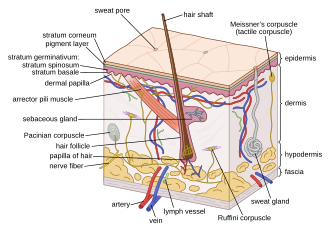Agriculture remains a cornerstone of Nigeria’s economy, providing employment, food, and raw materials for industries while also contributing to export earnings. With over 70% of the population engaged in farming and agro-related activities, the sector plays a critical role in the country’s socio-economic development.
 Nigeria is endowed with vast arable land, diverse climatic conditions, and a wide variety of natural resources, making it highly suitable for the cultivation of numerous crops and the raising of livestock. The agricultural sector contributes around 25% to Nigeria’s GDP and serves as the main livelihood for the majority of rural households.
Nigeria is endowed with vast arable land, diverse climatic conditions, and a wide variety of natural resources, making it highly suitable for the cultivation of numerous crops and the raising of livestock. The agricultural sector contributes around 25% to Nigeria’s GDP and serves as the main livelihood for the majority of rural households.
The major components of Nigeria’s agriculture include:
- Crop Production: The largest sub-sector, it includes the cultivation of staple crops like maize, rice, cassava, yam, millet, sorghum, and groundnut. Cash crops such as cocoa, oil palm, rubber, and cotton are also widely grown, particularly in the southern and central regions.
- Livestock Farming: This involves the rearing of animals such as cattle, goats, sheep, and poultry. It is especially prominent in the northern regions of Nigeria and plays a key role in local food supply and rural income.
- Fisheries and Aquaculture: Nigeria boasts significant water bodies and a growing aquaculture industry. However, the country still relies heavily on fish imports to meet domestic demand.
- Forestry: Although less emphasized, Nigeria’s forest resources provide timber, medicinal plants, and other non-timber forest products.
Challenges Facing Nigerian Agriculture
Despite its importance, agriculture in Nigeria faces several critical challenges:
- Low Productivity: Outdated farming methods, limited access to modern technology, and insufficient irrigation infrastructure hinder yields.
- Land Tenure Issues: Land ownership disputes and lack of clear land rights discourage investment in agriculture.
- Inadequate Infrastructure: Poor rural roads, storage facilities, and market access raise post-harvest losses and reduce farmer income.
- Climate Change: Erratic rainfall, desertification in the north, and flooding in other regions threaten food security.
- Limited Financing: Smallholder farmers often lack access to credit, insurance, and extension services.
The Nigerian government has introduced several programs to revitalize agriculture, such as:
- The Agricultural Transformation Agenda (ATA) and its successor Agricultural Promotion Policy (APP), which aim to boost productivity and reduce food imports.
- Anchor Borrowers’ Programme (ABP), launched by the Central Bank of Nigeria, links smallholder farmers with agro-processors through credit and input support.
- National Livestock Transformation Plan (NLTP), designed to modernize livestock production and reduce conflicts between farmers and herders.
Nigeria has the potential to become a major global food producer, given the right investments and reforms. Emphasizing mechanization, value chain development, agro-processing, and climate-smart agriculture can transform the sector into a powerful engine of economic growth and food security.
Furthermore, the rise of agritech startups, digital tools, and youth involvement in farming offers promising pathways for innovation and sustainability. With sustained efforts and policy consistency, agriculture in Nigeria can transition from a subsistence-based sector to a commercially viable and globally competitive industry.








